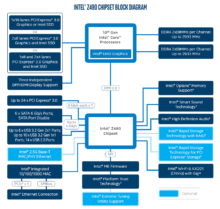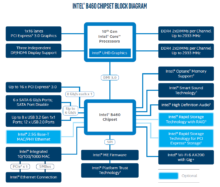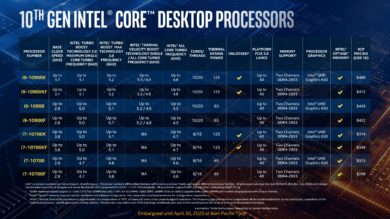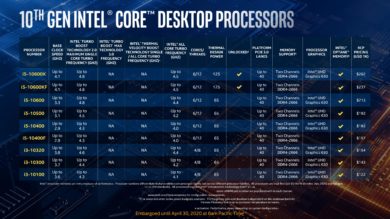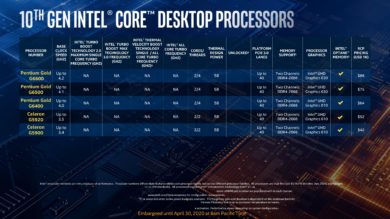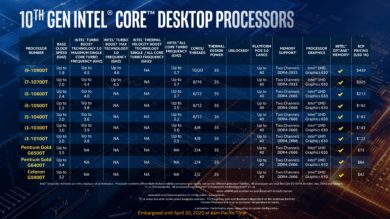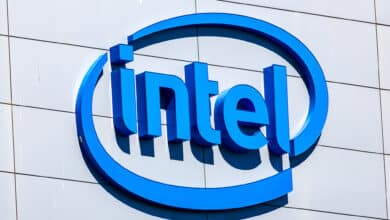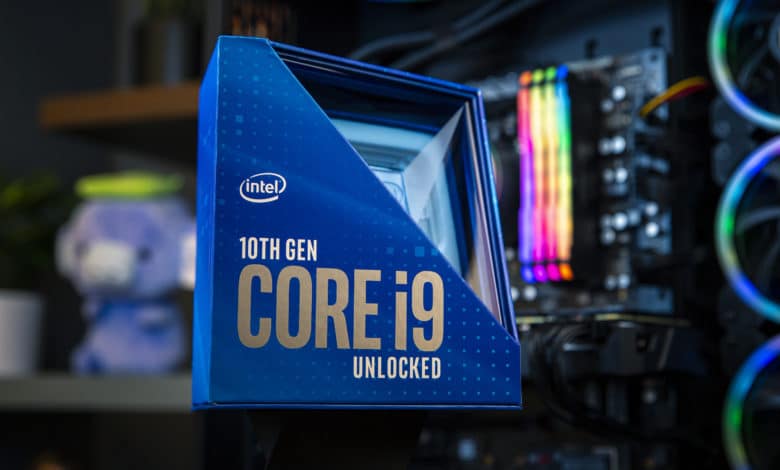
A lot of information about the latest processor generation from Intel has been leaked in advance. Now Intel has officially introduced the new generation including new mainboard chipsets.
Minor differences in chipsets
Even if the socket changes, instead of LGA1151 now LGA1200 is used – so new mainboards are due again – the mainboards change very little compared to the previous generation. New PCIe lanes or PCIe 4.0 have not been added.
Instead of 1 Gigabit LAN the chipset on the new mainboards Z490, B460 and H470 now offers 2.5 Gigabit. In addition, the current Wi-Fi 6 standard is also integrated; on the Z390, B360 and H370 it was still Wi-Fi 5.
Furthermore, the officially possible memory clock rate has been raised from 2.666 MHz to 2.933 MHz. Since most people with the XMP profile should use higher clock rates anyway, this is less relevant for most people.
Only with the B460 chipset there is still a change, which the other chipsets did not go through. Instead of 4x USB 3.1 Gen 2 and 6x USB 3.1 Gen 1 the B460 chipset now supports up to 8x USB 3.2 Gen 1×1.
The new Intel processors of the 10th generation
Intel relies on a higher clock frequency. Up to 5.3 GHz should now be possible thanks to Intel Thermal Velocity Boost. Another new feature is that all processors from i3 to i9 are now equipped with hyperthreading. This was not the case with the previous generation. The 10th generation offers up to 10 cores or 20 threads.
Intel promises a better overclocking potential through a thinner STIM (soldered thermal interface material), i.e. the heat conductive paste, between CPU die (the processor chip) and IHS (integrated heatspreader). Furthermore, the new Intel Turbo Boost Max Technlogy 3.0 is supposed to automatically detect the best cores and thus offer a higher performance – without changing the voltage.
Intel speaks of a performance increase of 18 percent in video editing. For Player Unknown’s Battlegrounds, 10 percent more FPS should be possible, for Mount & Blade II Bannerlord even 33 percent – compared to the previous generation. Here the Intel i9-9900K was compared with the i9-10900K with 32 GB RAM each at 2.666 and 2933 MHz and an RTX 2080 Ti. It would have been interesting, of course, if the RAM had been clocked at the same time.
I have to say that I am a bit disappointed by the innovations that Intel has introduced with the new generation.
Here is a complete overview of the new processors:
